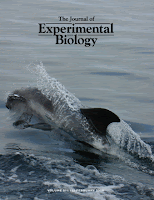 Vogt G, Huber M, Thiemann M, van den Boogaart G, Schmitz OJ & Schubart CD. 2008. Production of different phenotypes from the same genotype in the same environment by developmental variation. The Journal of Experimental Biology 211(4): 510-523. http://dx.doi.org/10.1242/jeb.008755
Vogt G, Huber M, Thiemann M, van den Boogaart G, Schmitz OJ & Schubart CD. 2008. Production of different phenotypes from the same genotype in the same environment by developmental variation. The Journal of Experimental Biology 211(4): 510-523. http://dx.doi.org/10.1242/jeb.008755Abstract
The phenotype of an organism is determined by the genes, the environment and stochastic developmental events. Although recognized as a basic biological principle influencing life history, susceptibility to diseases, and probably evolution, developmental variation (DV) has been only poorly investigated due to the lack of a suitable model organism. This obstacle could be overcome by using the recently detected, robust and highly fecund parthenogenetic marbled crayfish as an experimental animal. Batch-mates of this clonal crayfish, which were shown to be isogenic by analysis of nuclear microsatellite loci, exhibited surprisingly broad ranges of variation in coloration, growth, life-span, reproduction, behaviour and number of sense organs, even when reared under identical conditions. Maximal variation was observed for the marmorated coloration, the pattern of which was unique in each of the several hundred individuals examined. Variation among identically raised batch-mates was also found with respect to fluctuating asymmetry, a traditional indicator of the epigenetic part of the phenotype, and global DNA methylation, an overall molecular marker of an animal's epigenetic state. Developmental variation was produced in all life stages, probably by reaction–diffusion-like patterning mechanisms in early development and non-linear, self-reinforcing circuitries involving behaviour and metabolism in later stages. Our data indicate that, despite being raised in the same environment, individual genotypes can map to numerous phenotypes via DV, thus generating variability among clone-mates and individuality in a parthenogenetic species. Our results further show that DV, an apparently ubiquitous phenomenon in animals and plants, can introduce components of randomness into life histories, modifying individual fitness and population dynamics. Possible perspectives of DV for evolutionary biology are discussed.
Keywords: genotype • phenotype • variation • marbled crayfish • development • growth • colour • reproduction • behaviour • sense organs






No comments:
Post a Comment